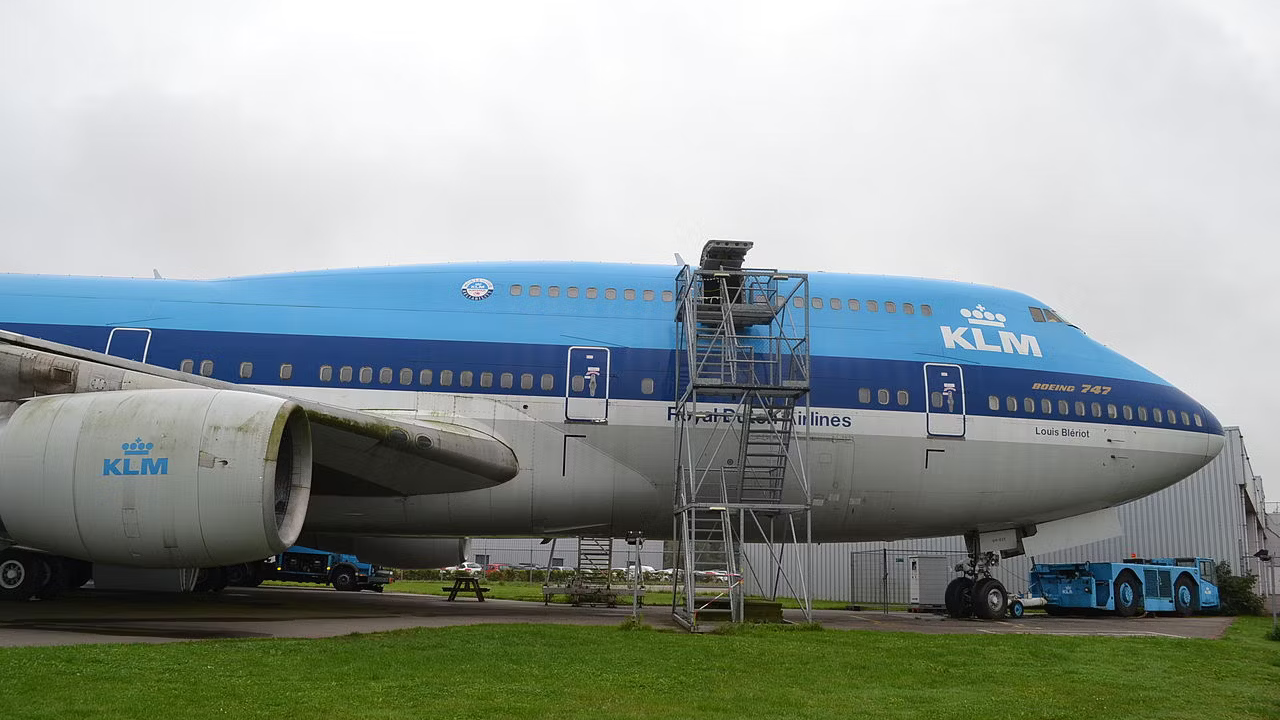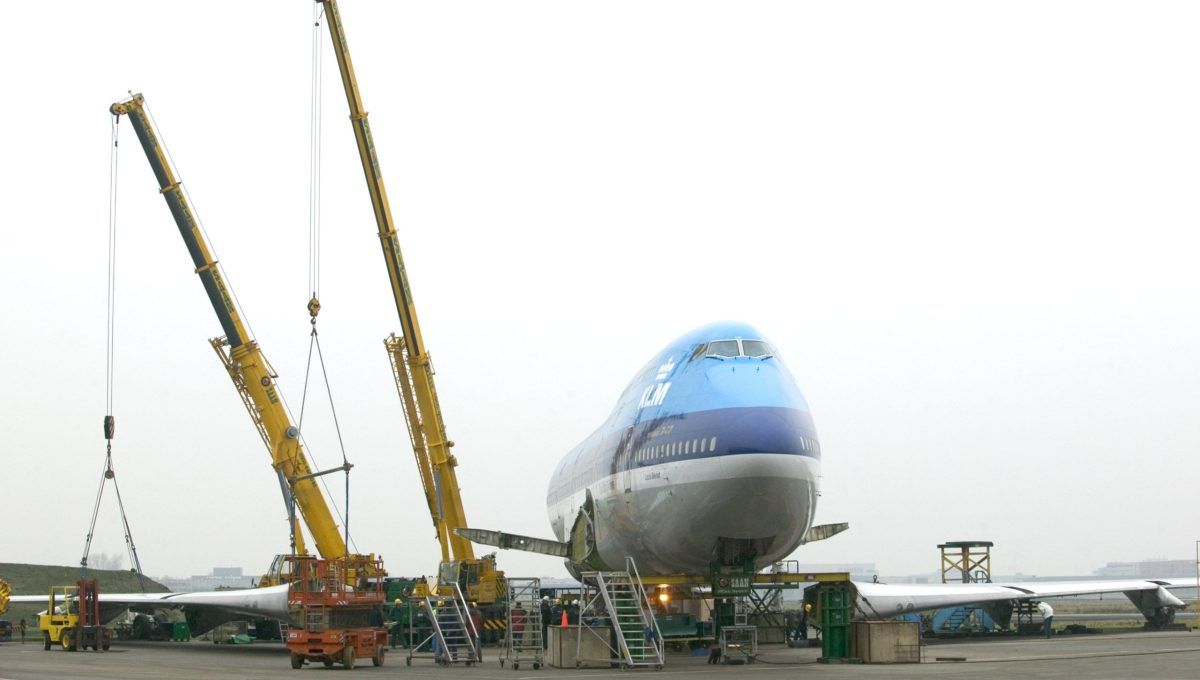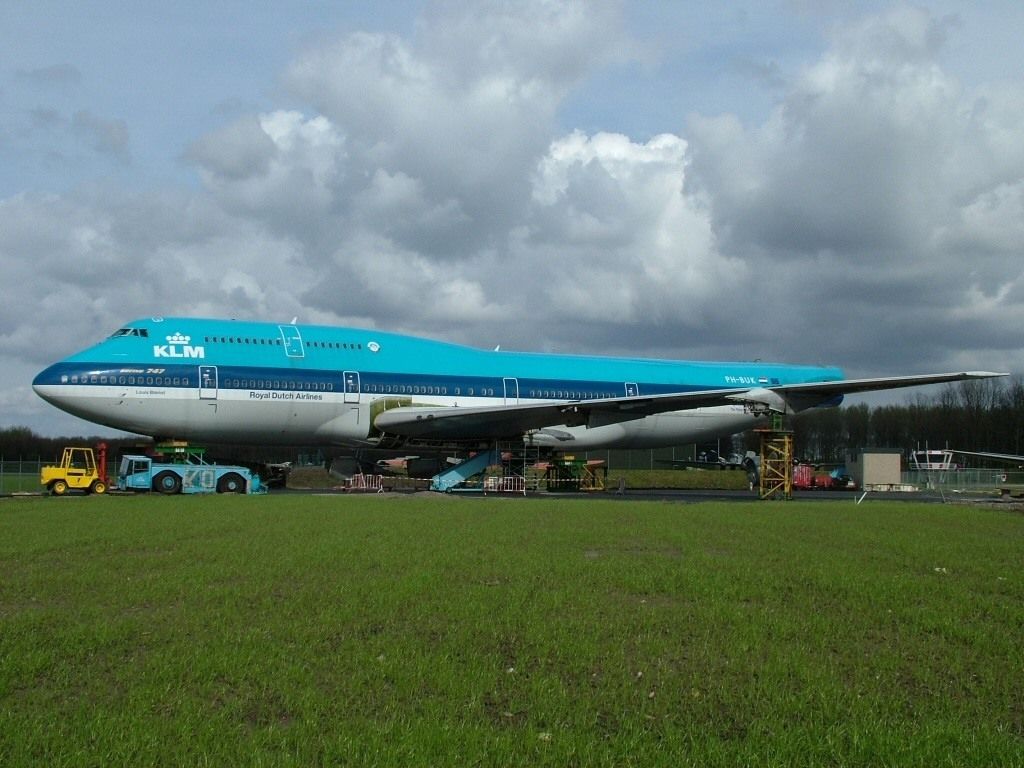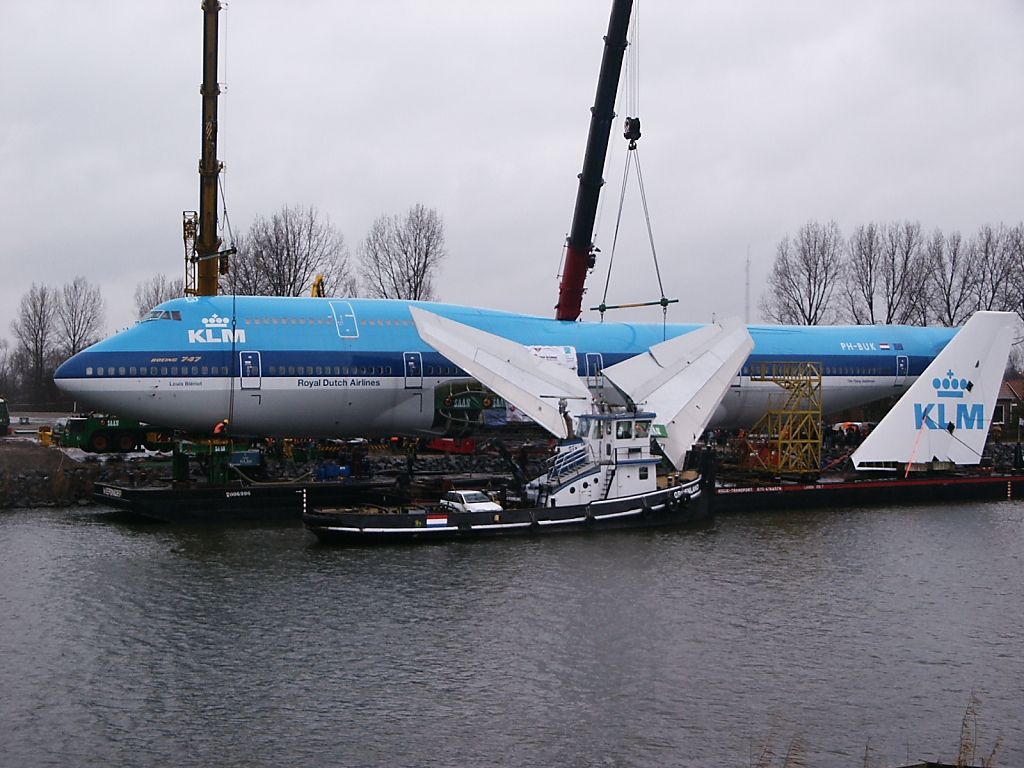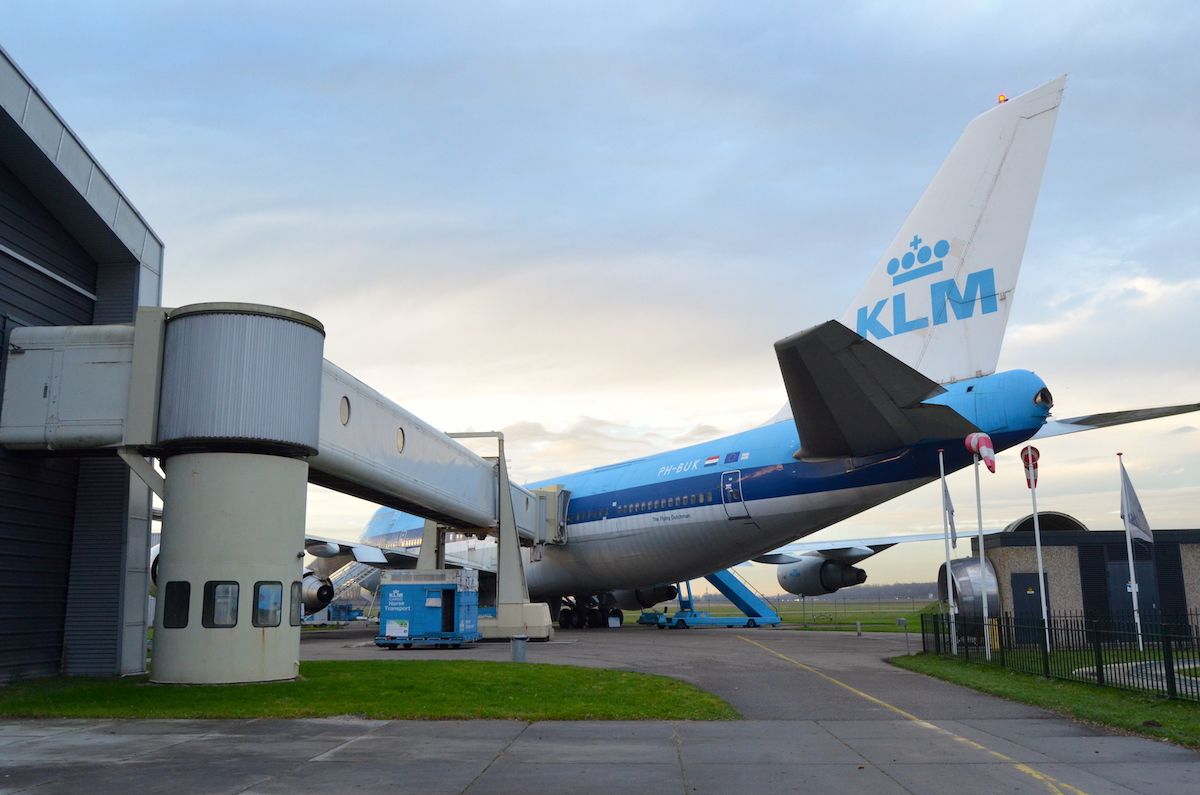Summary
- KLM's PH-BUK 747-200 traveled 61 million miles in 25 years before being retired and dismantled for transport.
- Due to its size, the jumbo jet was moved to the Aviodrome Museum by barge through canals of Amsterdam.
- Technicians dismantled wings, tail, and landing gear, cost volunteers €600,000, and transported the plane for public viewing.
In December 2004, a KLM Boeing 747-200 was partially dismantled and transported on a barge to the Aviodrome Aviation Museum in Lelystad, Netherlands. The aircraft (PH-BUK) entered service with KLM Royal Dutch Airlines in September 1978. After 25 years of service, the aircraft was retired in November 2003.
Since the jumbojet was too large to be flown to Lelystand (LES), it was transported by road and canal to its new home. This article captures the final journey of the aircraft, as highlighted by the Aviodrome Aviation Museum.
The KLM 747 (PH-BUK)
KLM Royal Dutch Airlines had been flying 747s since the early days of the jet. This example of the 747-200, PH-BUK, was named after the French aviator Louis Bleriot. The aircraft was delivered to the airline by Boeing in September 1978. Along with the stretched upper deck, the jet also held a “combi” configuration – having a cargo space (in the rear) and a passenger space (in the front).
Throughout its service life (all with KLM), the aircraft covered a whopping distance of 61 million miles (98 million km), with over 100,000 flying hours under its belt. At the end of a 25-year commercial service, the aircraft was withdrawn and stored at the Amsterdam Schiphol Airport (AMS) on November 17th, 2003.
The unconventional move
The Aviodrome Aviation Museum in Lelystad paid a symbolic amount of €1 ($1) to acquire the retired Boeing 747-200 from KLM. Since Lelystad airport was too small for the jumbo-jet to make a flight, the officials decided to transport the jet by water.
Measurements of the massive jet revealed that the wingspan was too wide to fit through the waterways of Amsterdam. The team decided to dismantle the aircraft's wings and tail section, before floating it on a barge.
A cumbersome task
Dismantling the aircraft began in August 2004 with a group of engineers and technicians at AMS. To keep the cost down, many technicians and shop workers volunteered their time for the massive task.
With the help of the aircraft manuals and consultation with the experts, the task was completed in four months. The total cost of the project was approximately €600,000, which mainly came from donations.
The technicians removed both wings, the horizontal stabilizers, the vertical tail section, and the landing gear. The electric and hydraulic systems were also disconnected. The fuselage of the 747-200, along with the dismantled parts, was loaded onto a barge for its final journey.
The final journey
In the late hours of December 15th, 2004, the 230 ft (70 m) fuselage of the KLM Boeing 747-200, along with the other sections, was transported through the waterways of Amsterdam. Several canals were cleared out for the special transport to Lelystad.
The barge, carrying heavy cargo, moved through multiple waterways in Ringvaart, Kostverlorenvaart, and central Amsterdam, before arriving in Harderwijk.
The aircraft was lifted with the help of heavy cranes and loaded onto a truck for the remainder of the journey by land. The aircraft arrived at the Aviodrome site on December 17th, 2004. The dismantled sections were reassembled on site before the jumbo-jet was ready for public display.
To this date, the iconic 747-200, in KLM livery, attracts aviation enthusiasts at the Aviodrome Aviation Museum.
Have you had a chance to see the KLM Boeing 747-200 display at the Aviodrome Museum? Tell us in the comments section.

